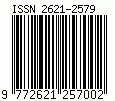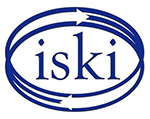Social Media Literacy of Tourism Village Activists in Wanurejo, Borobudur
Does Age Matter?
DOI:
https://doi.org/10.12928/channel.v10i2.124Keywords:
social media literacy, tourism village activist, digital marketing, wanurejo tourism village, human resource competenceAbstract
Borobudur Temple is one of the five Indonesian super-priority destinations targeted to be the "New Bali." Wanurejo tourist village is one of the areas affected by this and is considered a buffer zone to develop. Therefore, skilled human resources are required in the use of digital technology, especially social media, to be able to promote tourism destinations extensively and to increase tourism visits. This study compared and analyzed Wanurejo tourism village activists' social media literacy levels based on socioeconomic circumstances, particularly age. In order to acquire the data, a questionnaire was used as a data collection instrument. The 87 respondents who were Wanurejo tourism village activists make up the sample for this study. Data analyses were performed using descriptive and differences analysis. The findings demonstrated that the most popular social media platforms for communication, promotion, and information retrieval were WhatsApp, Instagram, and Facebook.
Additionally, Wanurejo tourism village activists had moderate social media literacy (71.58), characterized mainly by technical mastery. Based on the characteristics of the respondents, younger tourism village activists had a better level of social media literacy than older ones. According to the latest education, a higher education level was associated with greater social media literacy. As for the aspect of gender, income, and work experience, there were no notable differences in social media literacy. Therefore, strengthening social media literacy to support tourism promotion needs to be focused on millennials and highly educated tourism village activists.
References
Abbas, J., Mubeen, R., Iorember, P. T., Raza, S., & Mamirkulova, G. (2021). Exploring the impact of COVID-19 on tourism: transformational potential and implications for a sustainable recovery of the travel and leisure industry. Current Research in Behavioral Sciences, 2, 100033. https://doi.org/10.1016/j.crbeha.2021.100033
Ali, M. S. S., & Kootbodien, A. (2017). The effectiveness of WhatsApp as an interpersonal communication medium among Abu Dhabi university students. Int. J. Media Journal. Mass Commun., 3(1), 11–19.
Amechi, U. C., & Long, C. S. (2015). HR professionals technology proponent competency: A review. Asian Social Science, 11(1), 33–38. https://doi.org/10.5539/ass.v11n1p33
Aprilia, R., Sriati, A., & Hendrawati, S. (2020). Tingkat Kecanduan Media Sosial pada Remaja. Journal of Nursing Care, 3(1), 41–53.
Astari, N. (2021). A Literature Review: Digital Marketing Trends in Indonesia During the COVID-19 Pandemic. CHANNEL: Jurnal Komunikasi, 9(2), 125–134. https://doi.org/10.12928/channel.v9i2.20836
BPS. (2022a). Jumlah Perjalanan Wisatawan Nusantara (Orang), 2018-2020. https://www.bps.go.id/indicator/16/1189/1/jumlah-perjalanan-wisatawan-nusantara.html
BPS. (2022b). Kunjungan Wisatawan Mancanegara per bulan Menurut Kebangsaan. https://www.bps.go.id/indicator/16/1470/2/kunjungan-wisatawan-mancanegara-per-bulan-menurut-kebangsaan.html
Briandana, R., & Dwityas, N. A. (2019). Media Literacy: An Analysis of Social Media Usage among Millennials. International Journal of English Literature and Social Sciences, 4(2), 488–496. https://doi.org/10.22161/ijels.4.2.44
Celot, P., & Pérez Tornero, J. M. (2009). Study on Assessment Criteria for Media Literacy Levels : A comprehensive view of the concept of media literacy and an understanding of how media literacy level in Europe should be assessed. https://ec.europa.eu/assets/eac/culture/library/studies/literacy-criteria-report_en.pdf
Daud, R. F., Apriliani, D., & Kusuma, A. R. D. (2021). Forms of Instagram Social Media Communication in Promoting Lampung Province Tourism. CHANNEL: Jurnal Komunikasi, 9(2), 149–158. https://doi.org/10.12928/channel.v9i2.21053
Dwityas, N. A., & Briandana, R. (2017). Social media in travel decision making process. International Journal of Humanities and Social Science, 7(7), 193–201.
Eshet-Alkalai, Y. (2012). Thinking in the Digital Era: A Revised Model for Digital Literacy. Issues in Informing Science and Information Technology, 9, 267–276. https://doi.org/10.28945/1621
Gaffar, V., Tjahjono, B., Abdullah, T., & Sukmayadi, V. (2022). Like, tag and share: bolstering social media marketing to improve intention to visit a nature-based tourism destination. Tourism Review, 77(2), 451–470. https://doi.org/10.1108/TR-05-2020-0215
Ismail, I. H., Salim, M., Chang, J. (2022). Ledok Sambi Tourism Village Marketing Mix Strategy in the New Normal Era. Proceeding Youth Communication Day 2021 International Conference and Workshop “Communication Challenges in the Age of Hybrid." 532-550.
Jayasinghe, J., & Madushanka, D. (2021). Impact of Social Media Benefits on Tourists’ Travel Choice. International Journal of Innovative Science and Research Technology, 6(9), 796–804.
Kartika, T., & Riana, N. (2020). Storynomics Tourism as an Effective Marketing Strategy on Tourism Destination (Case Study on Tangkuban Parahu, West Java-Indonesia). Tourism and Sustainable Development Review, 1(1), 33–40. https://doi.org/10.31098/tsdr.v1i1.8
Kemenparekraf RI. (2021). Storynomics Tourism dari 5 Destinasi Super Prioritas. https://kemenparekraf.go.id/ragam-pariwisata/Storynomics-Tourism-dari-5-Destinasi-Super-Prioritas
Kiráľová, A., & Pavlíčeka, A. (2015). Development of Social Media Strategies in Tourism Destinations. Procedia - Social and Behavioral Sciences, 175, 358–366. https://doi.org/10.1016/j.sbspro.2015.01.1211
Kominfo RI, & Center, K. I. (2020). Status Literasi Digital Indonesia 2020.
Kurnia, N. D., Johan, R. C., & Rullyana, G. (2018). Hubungan Pemanfaatan Media Sosial Instagram dengan Kemampuan Literasi Media di UPT Perpustakaan ITENAS. Edulib: Journal of Library and Information Science, 8(1), 1–17.
Kurniawati, J., & Baroroh, S. (2016). Literasi Media Digital Mahasiswa Universitas Muhammadiyah Bengkulu. Jurnal Komunikator, 8(2), 51–66.
Mendari, A. S., & Soejono, F. (2019). Hubungan Tingkat Literasi dan Perencanaan Keuangan. Modus, 31(2), 227–240. https://doi.org/10.24002/modus.v31i2.2412
Monica, P. D., & Darma, G. S. (2022). Digital Marketing Strategy for Balinese Handicrafts Facing the Metaverse Era. CHANNEL: Jurnal Komunikasi, 10(1), 73–84. https://doi.org/10.12928/channel.v10i1.23747
Naslund, J. A., & Aschbrenner, K. A. (2019). Risks to Privacy With Use of Social Media: Understanding the Views of Social Media Users With Serious Mental Illness. Psychiatric Services, 70(7), 561–568. https://doi.org/10.1176/appi.ps.201800520
Pino, G., Peluso, A. M., Del Vecchio, P., Ndou, V., Passiante, G., & Guido, G. (2019). A methodological framework to assess social media strategies of event and destination management organizations. Journal of Hospitality Marketing & Management, 28(2), 189–216. https://doi.org/10.1080/19368623.2018.1516590
Pradana, M. I. W., & Mahendra, G. K. (2021). Analisis Dampak Covid-19 Terhadap Sektor Pariwisata di Objek Wisata Goa Pindul Kabupaten Gunungkidul. Journal of Social Politics and Governance, 3(2), 73–85.
Pratama, Y., Sinaga, A. M., Sianturi, R. A., & Situmorang, V. (2021). Literasi Media Digital pada Komunitas Pariwisata di Kawasan Danau Toba. Jurnal Master Pariwisata (JUMPA), 8(1), 245–258. https://doi.org/10.24843/JUMPA.2021.v08.i01.p13
Pratiwi, H. (2017). Strategi pemberdayaan masyarakat melalui desa wisata mandiri di Desa Wanurejo Kecamatan Borobudur Kabupaten Magelang.
Purwaningtyas, F. (2018). Literasi Informasi dan Literasi Media. Jurnal Iqra’, 12(2), 1–10.
Putra, N. A. (2017). Literasi Media Sosial Humas Pemerintah Daerah. Informasi, 47(2), 271–284. https://doi.org/10.21831/informasi.v47i2.17235
Salim, M., Pangestu, S., Barykin, S., Longani, K. D., Farihanto, M. N. (2022). Communication Patterns of The Mangunan District Government to The Community In Managing Village Tourism Potentials. ASPIRATION Journal. 3 (1), 1-20. https://doi.org/10.56353/aspiration.v3i1.46
Safitra, R., Salim, M., Marta. R. F., Hariyanti, N. (2022). Peningkatkan Wisatawan Masa New Normal: Telaah Strategi Komunikasi Pemasaran Dinas Pariwisata dan Kebudayaan Kabupaten Kampar. Jurnal Politikom Indonesiana. 7 (1). 40-64. https://doi.org/10.35706/jpi.v7i1.6701
Santi, I. N., & Fadjar, A. (2020). The Function of Social Media as a Promotion Tool for Tourism Destinations. Advances in Economics, Business and Management Research, 135, 130–132. https://doi.org/10.2991/aebmr.k.200410.020
Simangunsong, T. L., & Soesanti, A. (2018). Penerapan community based tourism (CBT) dalam pengembangan desa wisata di Desa Duyung, Trawas, Mojokerto. Seminar Nasional Hasil Pengabdian Kepada Masyarakat (Sendimas) Universitas Kristen Maranatha, 265–270.
Statista. (2021). Breakdown of social media users by age and gender in Indonesia as of January 2021.
Tandoc, E. C., Yee, A. Z. H., Ong, J., Lee, J. C. B., Xu, D., Han, Z., Matthew, C. C. H., Ng, J. S. H. Y., Lim, C. M., Cheng, L. R. J., & Cayabyab, M. Y. (2021). Developing a Perceived Social Media Literacy Scale: Evidence from Singapore. International Journal of Communication, 15, 2484–2505.
Ulrich, D., Brockbank, W., Younger, J., & Ulrich, M. (2012). HR Talent and the New HR Competencies. Strategic HR Review, 11(4), 217–222. https://doi.org/10.1108/14754391211234940
Downloads
Published
How to Cite
Issue
Section
License
Copyright (c) 2022 CHANNEL: Jurnal Komunikasi

This work is licensed under a Creative Commons Attribution-ShareAlike 4.0 International License.






